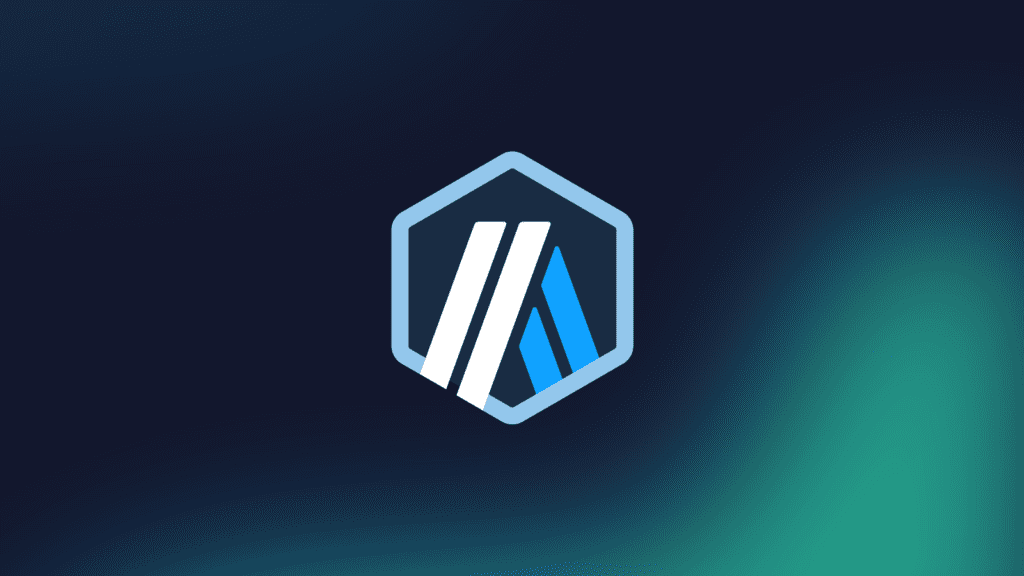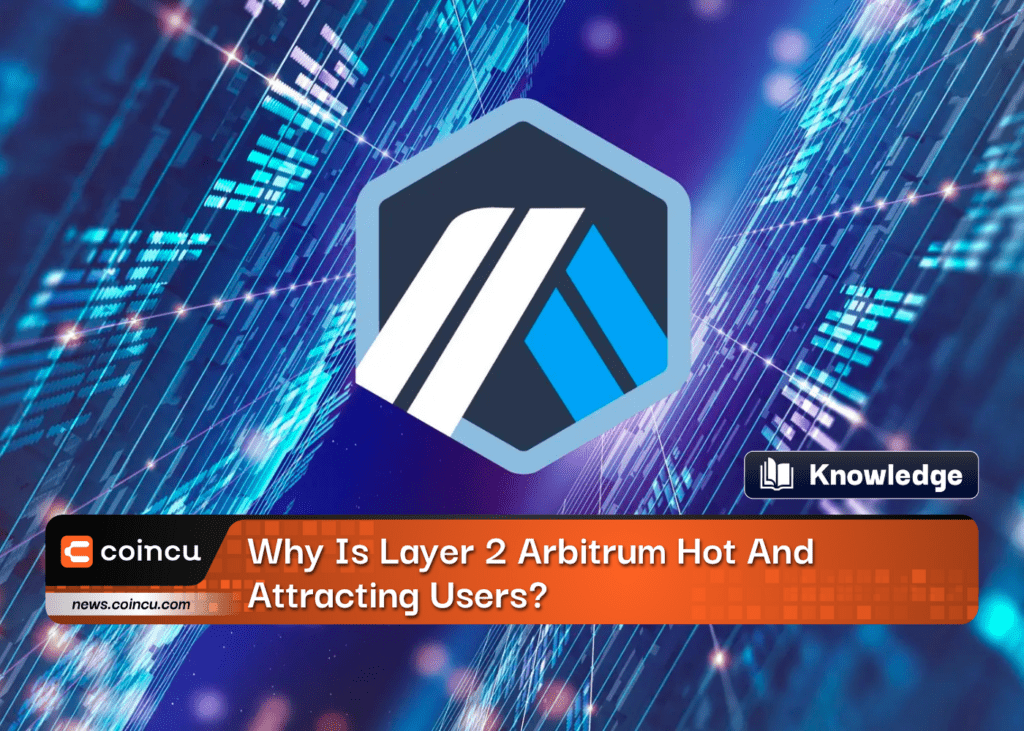Key Points:
- Arbitrum has great mechanics to be the top Layer 2 on Ethereum.
- Interoperability with the EVM virtual machine makes transaction costs on this Layer 2 more economical.
- The launch of the ARB token and the governance of the DAO have attracted more user attention.
Arbitrum, the biggest Ethereum layer 2 scaling solution, saw a surge in Google searches after the Arbitrum Foundation announced the airdrop. The project has already been at the forefront of the layer 2 roll-up.

The momentum for Ethereum Layer 2 solutions are strong, and Ethereum 2.0 already provides a scalability guarantee. This demonstrates that the necessity of Layer 2 solutions in Ethereum’s future is generally understood. Arbitrum seems to be getting particular attention from the community as a result of the project’s appeal and being the focus of Layer 2.
After what Optimism (its competitor) has done, it is not surprising that many people have high hopes for ARB. So what makes this project so attractive? Let’s find out with Coincu through this article.
What is Arbitrum?
Arbitrum is a Layer 2 scaling solution designed to address Ethereum’s congestion issues. Layer 2 is a technology or system that operates atop Layer 1. They inherit Layer 1’s security and are able to handle more transactions, cut expenses, and have transaction confirmation time that is quicker than Layer 1.
Smart contracts and sophisticated computer algorithms are used to power all Ethereum apps. Any interactions using smart contracts are referred to as transactions. The network members who maintain the blockchain and store smart contracts on the system are then charged a fee.
With an increasing number of smart contracts and users, the Ethereum network must handle an increasing number of transactions, which are not free and result in rising transaction fees and slower execution times. Arbitrum was established to address the aforementioned issues.
In the Ethereum network, Arbitrum employs an Optimistic Roll-up operation method developed with scalability in mind.
In essence, this is a Layer 2 solution for the Ethereum dApps of the future. Arbitrum’s arrival optimizes Ethereum’s scale without jeopardizing security. It also improves efficiency and incorporates several new features for the ecosystem.
Arbitrum operates two parallel chains: a Roll-up chain known as Nitro and an AnyTrust chain known as Nova. Nitro performs the Optimistic Rollup process, which is to bundle transaction data into the Ethereum chain for storage.
Nova, on the other hand, depends on a third party known as the External Data Availability Committee to keep and create transaction data on demand. Transaction costs are considerably decreased by not bundling transaction data into the Ethereum chain. Nova is ideal for game development, DApps, and social initiatives. The chain’s remarkable speed is one of its distinguishing features. The chain’s processing speed may exceed 40,000 transactions per second.
When you join Arbitrum, you will have access to excellent tools for scaling dApps at the lowest possible cost. Since it is EVM compatible, Smart Contracts and tokens on Ethereum may be easily transferred to this platform and vice versa.
Why is Arbitrum Attracting Users?
Arbitrum Virtual Machine (AVM)
Arbitrum runs a virtual computer (AVM) atop the Ethereum Virtual Machine (EVM) that is compatible with programming languages such as Solidity and Vyper.
AVM is a virtual participant in the protocol that contains the necessary code and data for defining the virtual machine’s functions.
This is appealing to Ethereum developers because it allows them to deploy their apps on the Arbitrum chain without having to modify their code. Arbitrum, therefore, has the edge over other Optimistic Rollup systems such as Optimism.
The EVM serves as the foundation for the AVM architecture. Arbitrum utilizes many parts of EVM unaltered since it attempts to efficiently run programs written or built for EVM.
The demands of the Layer 2 protocol, as well as its usage of a multi-round challenge system to settle disputes, drive the differences between AVM and EVM.
Unlike EVM and comparable architectures, Arbitrum must allow both execution (advancing the state of computation via local emulation) and proof (convincing an L1 contract or other trusted party that a claim about execution is correct). It depends on a challenge procedure that leads to an ultimate proof, while EVM-based systems settle disputes by re-executing the disputed code.
The Optimism Virtual Machine (OVM), on the other hand, only supports the Solidity programming language, which limits its interoperability with the Ethereum Virtual Machine.
As a result, certain EVM-compatible transactions may fail to build on OVM. As a result, Arbitrum is an excellent platform for most Ethereum dApps seeking to launch their Ethereum dApps on a more scalable platform.
Multiple rounds rollup
Optimistic Rollup is a rollup that is optimistic in the sense that when a statement is made, it does not come with supporting evidence proving its validity. Instead, when the assertion is placed on-chain, the validator who made it publishes a bond, and there is a time window during which anybody may submit their own bond and challenge the claim if they believe it is incorrect. This is frequently referred to as “fraud-proof.” If the asserter is incorrect, the relationship will be severed. If no valid challenges are made before the challenge time ends, the claim is accepted and becomes final.
In comparison to previous Rollup techniques, Arbitrum Rollup’s architecture shines in that it supports arbitrary EVM smart contracts and works with all Ethereum developer tools.
Its multi-round rollup technique considerably reduces the expenses associated with Fraud Proofs. The initiative aims for a lower-cost solution with a broader application (support for highly complex transactions).
Governance and token
The Arbitrum Rollup protocol is administered by two regulatory bodies: the Security Council and the Arbitrum DAO.
The Security Council is a 12-member council of entities chosen by Arbitrum DAO members. This Council is in charge of guaranteeing the security and performance of Arbitrum by the selective use of emergency actions as needed.
The Arbitrum DAO is a worldwide community of ARB token holders and the delegates they have selected. Arbitrum and its Privacy Council are administered by the DAO. The DAO might utilize constitutional amendments to change the Security Council’s authority or perhaps abolish it entirely. The DAO transferred the Security Council’s powers to the Security Council, which must be handled in the best interests of the DAO. Arbitrum DAO provides an introductory review of the DAO’s many components.
For a variety of reasons, continued token issuance and airdrop are crucial. For starters, this demonstrates that Offchain Labs, the company behind Arbitrum and a team with extensive industry ties, feels that market circumstances are favorable enough to launch a long-awaited token. There is no purpose to give an airdrop during a bad market since consumers would trade free coins in exchange for safer assets. Second, 1% of tokens are distributed to Arbitrum ecosystem DAOs such as Jones DAO, Plutus DAO, Camelot Exchange, and GMX.
These protocols, whether proprietary on Arbitrum or based mostly on it, will be rewarded with ARB tokens for their early development. As we’ve seen with the Polygon, Avalanche, and Harmony incentives, the native token is held in the DAO treasury or utilized as a reward for DeFi users to promote more protocol engagement. DeFi platform tokens become more valuable in any case, and we’re already seeing this with the Arbitrum initiatives described above. Moreover, 40% of the token distribution is stored in the DAO treasury and is available for allocation to DeFi protocols.
Eventually, the ARB’s release enables end users to make the biggest and most profitable Ethereum Layer 2 investment ever. Arbitrum is a worthy rival to Layer 1 platforms, and it may attract users from blockchains such as Solana, Polygon, and Avalanche, among others. The platform may potentially increase the value of Ethereum. The greater the number of transactions on Arbitrum, the more transactions are saved and confirmed on the Ethereum chain.
Conclusion
Arbitrum, Optimism, zkSync, and StarkNet are four prominent layer 2s that are expected to grow in popularity in 2022. For the most portion of the year, the first two were seen dueling for dominance. Because of the simplicity with which projects may be ported over, both rollups have been chosen. Arbitrum and Optimist have also been adopted by a number of big centralized crypto exchanges.
The ARB token launch is one of the first pieces of positive news to hit the crypto world since Ethereum’s The Merge event in September 2022. In the midst of regulatory worries, USDC depreciation, and other unfavorable consequences, Arbitrum’s confidence in issuing tokens is a favorable indicator for Web3’s prospects while the FTX situation persists.
The projects that are presently dominating Arbitrum include GMX, ZyberSwap, Uniswap V3, Sushi, and SolidLizard.
DISCLAIMER: The Information on this website is provided as general market commentary and does not constitute investment advice. We encourage you to do your own research before investing.
Join us to keep track of news: https://linktr.ee/coincu
Harold
Coincu News





